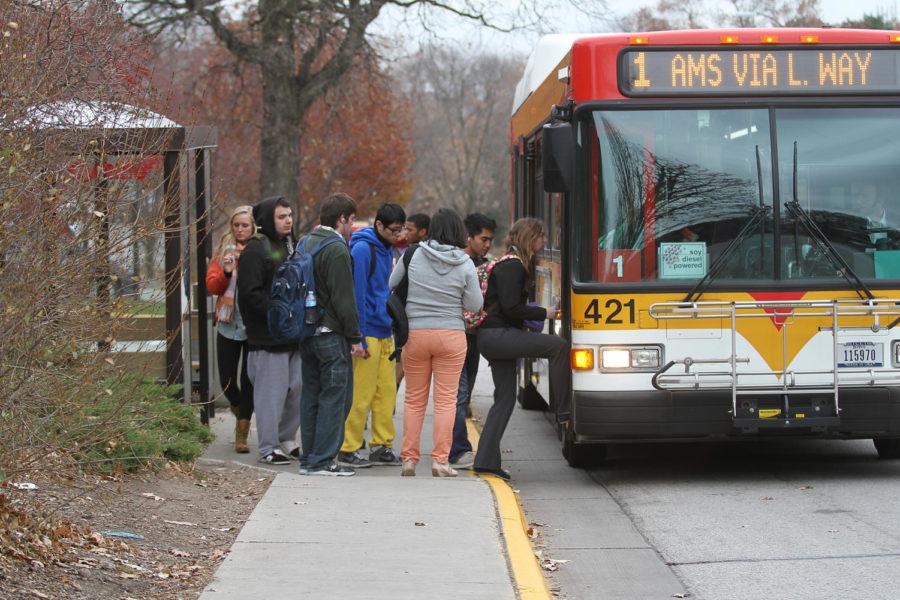Editorial: Ames, Iowa State must reach agreement on CyRide funding
Students pay a semester fee to be able to use the CyRide for free. The city of Ames, Government of the Student Body and students help fund this service.
November 21, 2013
With record-breaking enrollment at Iowa State this year, campus has seemed more full than ever. More than 33,000 students pack the classrooms, sidewalks and buses. However, that increase in student population does not account for the total increase in CyRide use that many have witnessed. Some students find themselves having to wait for the second or third bus before finding one that has enough room to board.
Though the recent increase in student numbers is about 6 or 7 percent, the increase in CyRide ridership hovers around 19 percent — much higher than a burgeoning enrollment can account for alone. Part of this may be caused simply by more students taking advantage of the free transportation system, but it seems unlikely that that would be the sole reason.
Regardless of blame, CyRide systems are overburdened and in order to expand routes or increase the number of available buses, funding must come from somewhere. A Government of the Student Body meeting on Nov. 13 was joined by the Ames City Council in order to address this among other issues that face the populations of Ames and the university. Solutions that have been offered include adding new 3 Blue CyRide routes on Sundays as well as potentially more 4 Gray and 1 Red routes. These routes would help with areas of new development that need transportation services, as well as decongesting the most packed of the buses.
Heavily tied to the university and student use as CyRide is, some may feel that this funding should come from students. However, this is problematic, as students are already charged in a multitude of ways for the “free” bus service. A sliver of tuition dollars goes toward the service, as does some of the student activities fee that each ISU student pays. Additionally, most ISU students live in Ames, and thus pay the Ames property/utilities tax via whatever home or apartment in which they reside.
GSB President Spencer Hughes, among other representatives, finds making student fees alone bear the burden of increased CyRide funding to be unacceptable. CyRide’s funding comes from three partnered groups: the city of Ames, Iowa State and student fee dollars. Because of this, many (including Hughes) feel that the needed funding should be provided by all three groups, in order to continue the shared funding model that now exists.
The argument against this is that ISU students account for approximately 90 percent of ridership, though the student portion pays for only 60 percent of the operating cost. The disparagement between these two numbers seems to justify an increased student fee, but Hughes feels that these numbers are an “oversimplification” of the problem.
As previously mentioned, students pay for the CyRide bus services in more ways than one. In addition to the “student fees” portion of the funding, it is students’ tuition that indirectly funds the university’s portion of CyRide funding. Also, the property tax that Ames collects from students that are residents of Ames indirectly funds Ames’ various utilities, including CyRide.
Considering that ISU students are already paying for CyRide in so many ways, it seems unfair to ask for the increased need for funding be collected from student fees alone. With the increase in enrollment and student use of the buses, it is reasonable to ask for them to partially fund the added services. However, the other two groups in the partnership, the city of Ames and the university, should assist with the expansion.
A need for more buses and routes is just another part of ISU’s growing pains. However, with students already paying threefold for the CyRide service, it is unfair to extract all expansion funds from them. If the financial backing of CyRide is truly a partnership, all partners need to do their share.







